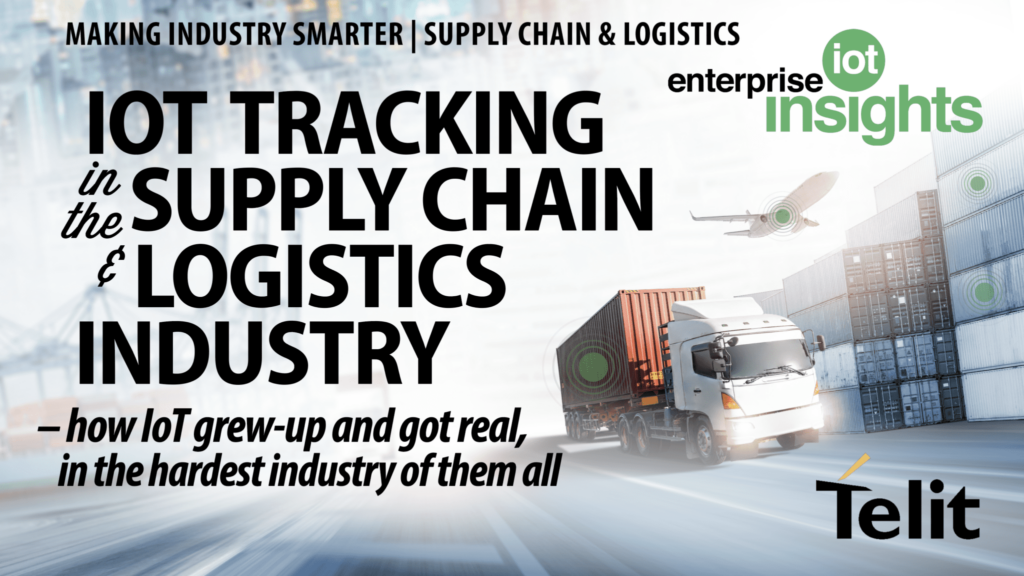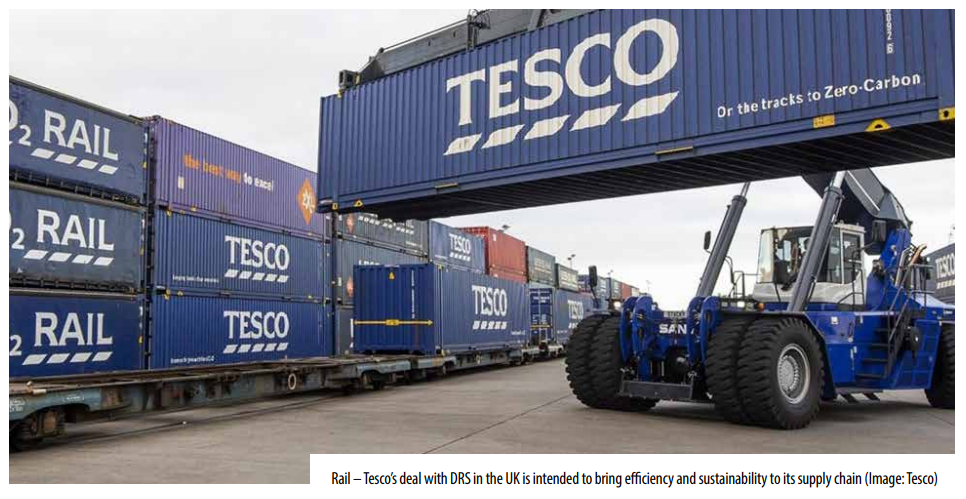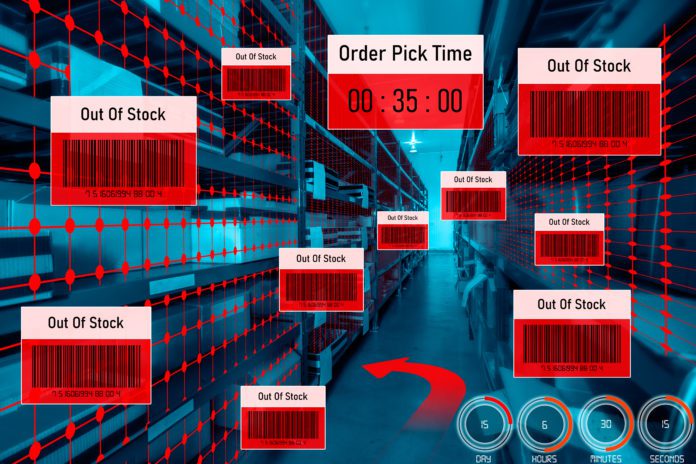Note, this article follows directly from a previous post (part 3; January 27) – about roadmap errors and design issues in the rollout of IoT in the supply chain sector, which followed from other posts in the series onJanuary 25 (part 2) and January 24 (part 1); all articles are taken from a new editorial report on the state of IoT in the supply chain sector, released this month (January 2023), and available to download here. The report features additional information, interviews, and case studies.

Let us return to this argument, gathering popularity, that the IoT market has grown up; that IoT just works – well enough that technology is no longer the start-point for a conversation with industry about digital change. Instead, a linear narrative can now be plotted between a business problem and a business outcome, without being forced to make into the kinds of technical detours or digital diversions that overwhelm a business case, and make it lose focus.
More than this, there is a creeping realisation that IoT is only a part of the solution, and neither the start of it (probably), nor the whole of it (certainly). “There has been a shift to think about logistics more from a systems perspective, rather than from just an edge perspective. Because IoT is really just to fill the gaps; it is not like, if you have IoT, you suddenly have visibility. Other sources already exist, and are underutilised,” says Tancred Taylor at ABI Research.
“As the technology has improved, it has become a secondary concern; it is no longer the first discussion. Enterprises have started to think about the use case, first – as they should. Because it is not just a question of whether you can track and monitor an asset in the supply chain; you can much more than that – offer more services, improve the asset flows, offer better billing, change your whole business model. The key is what you build on top of IoT.”
(These are the stories, about bigger business-change, told by enterprise users like Brambles Group on pages 24-25 in the report, Konvoy Group on pages 26-29, and JD Logistics on pages 32-34, plus in the main section.)
IoT tracking provider Roambee suggests the whole shift has happened in the wake of the pandemic rush for IoT tracking and monitoring solutions, and the efficiencies being eked out in the name of sustainability. “Twelve months ago, it was, ‘Here is an IoT device, to stick on a shipment, to track from A to B’; but those days are gone,” says Sanjay Sharma, chief executive at Roambee. The pandemic-push has “given way to something bigger”, he suggests.
The point for Sharma, as for others, is that enterprises are no longer looking at IoT as a quick-fix. They have had a taste of it, and promptly decided to change their whole diet; they want a total solution, based on data, with a view to total change. “Track-and-trace makes supply chains transparent, but the ultimate goal is to deliver autonomy and sustainability in the supply chain,” he comments, also echoing Taylor’s point about joining dots and filling gaps.
“Twelve months ago, IoT was being used to light up the supply chain, to identify glitches in it. Now the supply chain is all lit-up, all the glitches are known, and all the improvements are being made; instead, the question is how else that IoT data and supply-chain data can be used to optimise a logistics network.” Sharma references UK trade coverage of retail giant Tesco, which has made a splash in the rail press in recent months with its intermodal delivery tactics.
Tesco has extended a partnership with Direct Rail Services (DRS), the general cargo rail division of Nuclear Transport Solutions, to run supermarket supplies around the country on freight trains, and to reduce its reliance on road haulage – at a time (post-Brexit, post-Covid, peri-war, peri-recession; pre-#nze2050, pre-armageddon etc) when fuel prices are high, traffic is busy, and delivery schedules are being missed.
“With Tesco, every time there was an out-of-stock, it would just send a truck to the store. But post-covid, the fuel has gone up and the roads are busier – so it is expensive, bad for the environment, and hard to predict. So it has figured out the only way to replenish items predictably is to move them on rail cars – on a truck from a central warehouse, onto a rail box on a train to the local station, and back on a truck to the store,” he says.
Is Roambee supplying the trackers and platform? Sharma is not saying; it is just an illustrative example, he says. “It will be extracting telematics from its truck fleet, either side, and putting IoT on rail cars, to see where the goods are, and any risks to the timetable. The thing is to extract the data from all different systems, and make it available in a single pane of glass. It [brings] predictability and sustainability to a supply chain, and reduces cost as well.”
It is an example of day-three digital-change for the supply-chain industry, as Sharma tells it. He has a five-step journey plan for transformation (see page 13 of report), which is what Roambee sells to enterprises – further underlining the notion that the IoT discourse has changed lately. “If we go to a customer and talk about AI and ML, and digital twins, they just get worried – because these are big buzzwords, and they sound expensive. So we take them on a journey.”
Roambee’s five-day journey says enterprises will be changed on-arrival – transmogrified, as Bill Watterson would have it, with total visibility of their supply chain, covering these twin disciplines of traceability and transparency, bringing not just enlightenment, but reinvention as well, as per the enterprise accounts at the end of this report. So the story goes; but let’s check back in with Hugo at DeltaTrak, briefly.

The idea of closer engagement is right, he says. “There is change for two reasons: the technology has evolved, and tech companies are starting – very slowly – to engage properly with enterprises.” Equally, the customer market is interested in the supplier market because of an “abstract push” on sustainability and a related “non-abstract” push on legislation – not directly linked to war and recession. “The business case is pushing the technology, at last” he says.
Thirty percent of global greenhouse emissions come from loaded shipping freight, he says; actually, it is closer to three percent (according to the International Maritime Organization), but 27 percent is from logistics at-large (says the European Union), including aviation, and 37 percent is from transportation in-total (International Energy Agency). On regulation, Hugo refers to the EU example on supply-chain standards (“a moral institution par excellence”).
He also notes the introduction of the Food Safety Modernization Act (FSMA) to transform the food logistics in the US, to take preventative action against the kind of “foodborne illness” that harmed Taco Bell. “In layman’s terms, it says you can’t push products without the right physio-sanitary certifications. Which never used to be the case. Every container will have a set of documents with data about the state of the product, and how it has been stored,” he says.
But these are background drivers for IoT tracking; the discussion has moved beyond, we have heard, to how the tech-supply industry is engaging with enterprises to stitch IoT data extracted from goods-in-motion into legacy enterprise systems to achieve broader intelligence and deeper change. Taylor rejoins, suggesting the supplier market splits three ways, with digital ID vendors and real-time IoT vendors at the coal face, for traceability and tracking.
These disciplines are not primarily defined by connectivity tech, he suggests; the first group is providing scanning equipment (barcodes, QR codes, RFID tags) to register asset flows; the second group is rendering rising volumes of edge data in the cloud (“more focused on software and outcomes”). But a third contingent of data aggregators and tower vendors, higher up in the control room, is mashing it all together in order to find new meaning.
This is where the real action is, reckons Taylor. “These are all these huge data repositories, which further reveal what’s happening in a supply chain,” he says, in reference to legacy enterprise resource planning (ERP) and transport and warehouse management (TMS/WMS) systems. “They have a lot to say, if they’re allowed to talk to each other. But they are not being connected – which is one of the big problems, and one of the big opportunities.”
Another Taylor favourite is project44, which we heard from earlier. The Chicago-based firm has just (late 2022) raised $80 million in a venture round led by UK-based Generation Investment Management and Denmark-based A.P. Moller Holding, the investment arm of A.P. Moller Maersk, and parent of container shipping company Maersk Line. The round values project44 at $2.7 billion – 12 percent higher than after a $420 million Series F round in January.
The company is at the top of the supply-chain food-chain – at least insofar as its proposition, consolidated in a new master platform called Movement, takes a top-view of data in every corner of the supply chain, going beyond just novel IoT systems to include WMS and TMS systems, plus sundry ERP engines – in order to chuck-out insights to make the whole agglomeration move faster, easier, smarter.
But project44 is notable, as well, on the grounds it achieved unicorn status, with a value of $1.2 billion, at the start of 2021, on an accelerating trajectory of 100-plus percent growth the previous year, and a hat-trick of acquisitions in the 12 months following – of Austin-based last-mile delivery-tech provider Convey for $255 million, plus Germany-based sea freight specialist Ocean Insights and compatriot US ocean analytics firm ClearMetal.
In April, it also acquired Germany-based barge and rail logistics data provider Synfioo. “We’re not doing any more,” responds Bart de Muynck at project44. “But yes, we’ve acquired these companies – because we wanted to be more global, and to cover all modes of transportation.” Indeed, the logic looks plain; project44 started with less-than truckload (LTL; between parcel- and truck-sized loads) logistics in the US, before moving to full-truckload (FTL) domestic shipments.
He says: “There were already global leaders for ocean [freight] and last-mile [deliveries] – which is why we acquired Ocean Insights and Clear Metal on the ocean side, and Convey for last-mile. Synfioo is focused on specific modes of transportation for Europe like intermodal rail and barge – which is quite different. And all of those acquisitions, all of those different data sets, come together in Movement – so you don’t have a different experience for each transport.”
The importance of simplified single-access to logistics data is intensified in these constant ‘never-normal’ times. De Muynck lists the disruptions again: rising inflation, tighter regulation, falling demand; energy crisis, labour crisis, climate disaster; industrial sovereignty, industrial automation, digital infrastructure. And these disruptions are intensified in siloed data functions in supply-chains, he suggests. “Logistics is the worst for data silos,” he says.
“Companies have never had enough visibility – not into their own operations, and not across their supply chains. We still see way too many manual or inefficient processes. And the supply chain, by definition, is collaborative – because it is a chain. But it has lost track of that. If companies want to change, to be more efficient and productive, and have new digital business models, then they have to collaborate – and visibility data is the best way to do that.”
The rest of this article appears in a new editorial report, available to download for free here.

